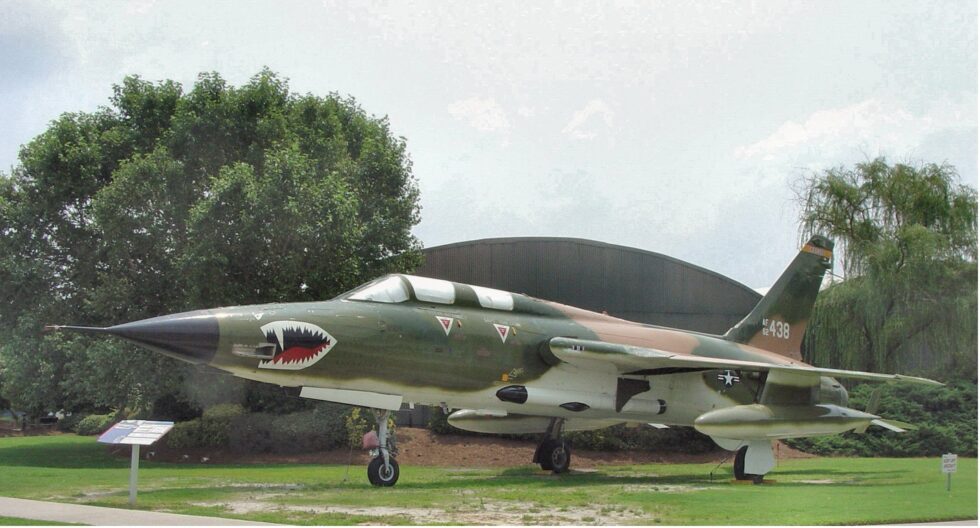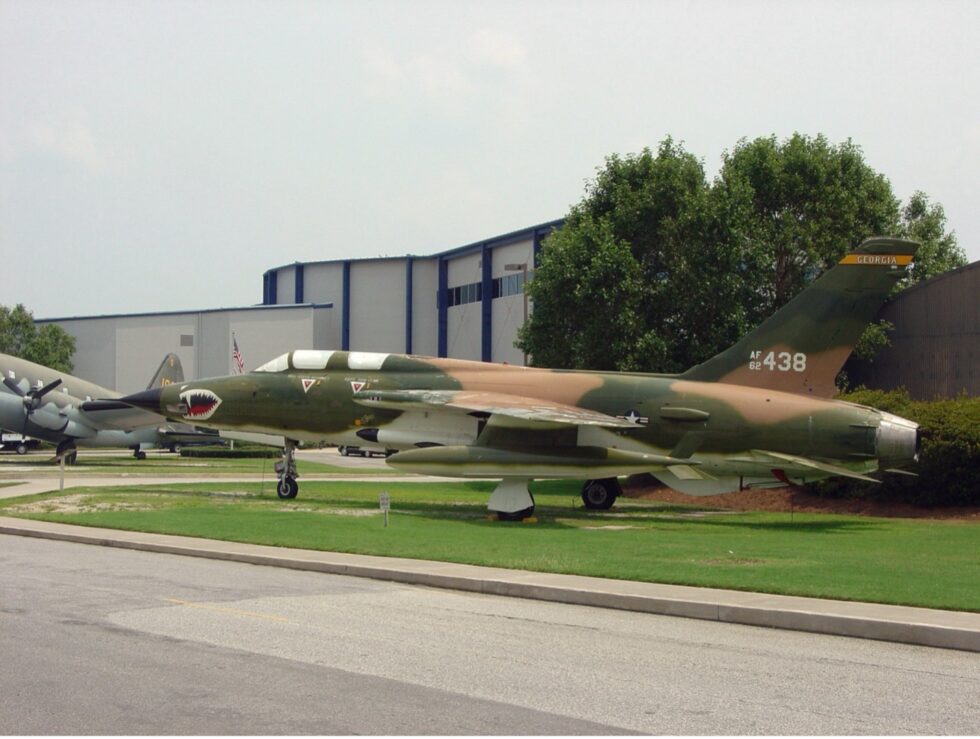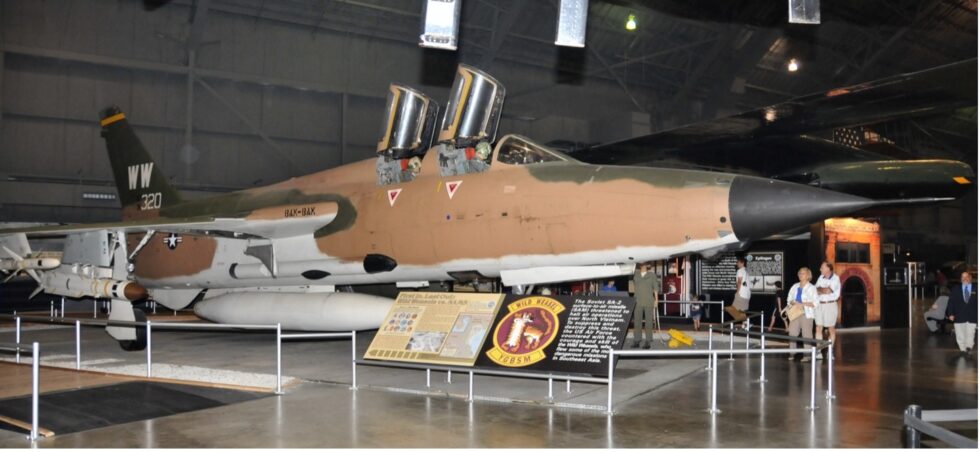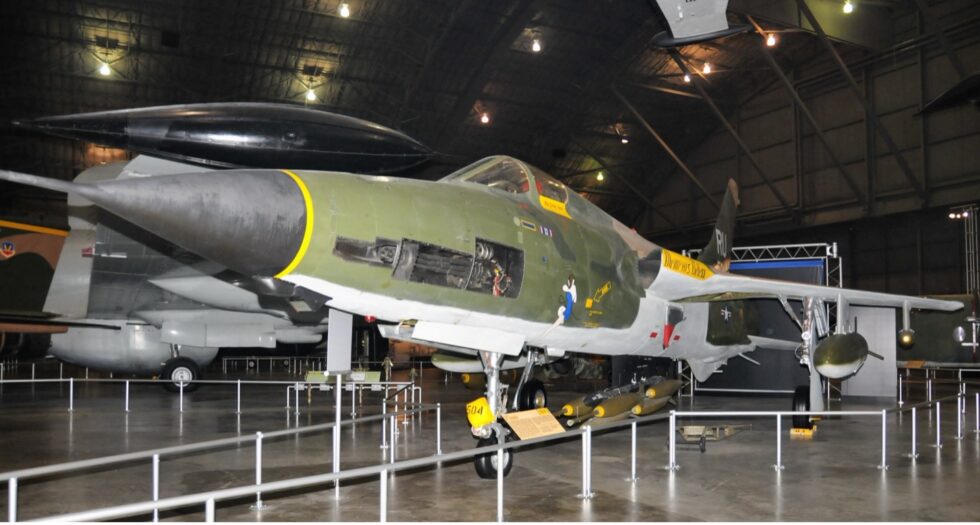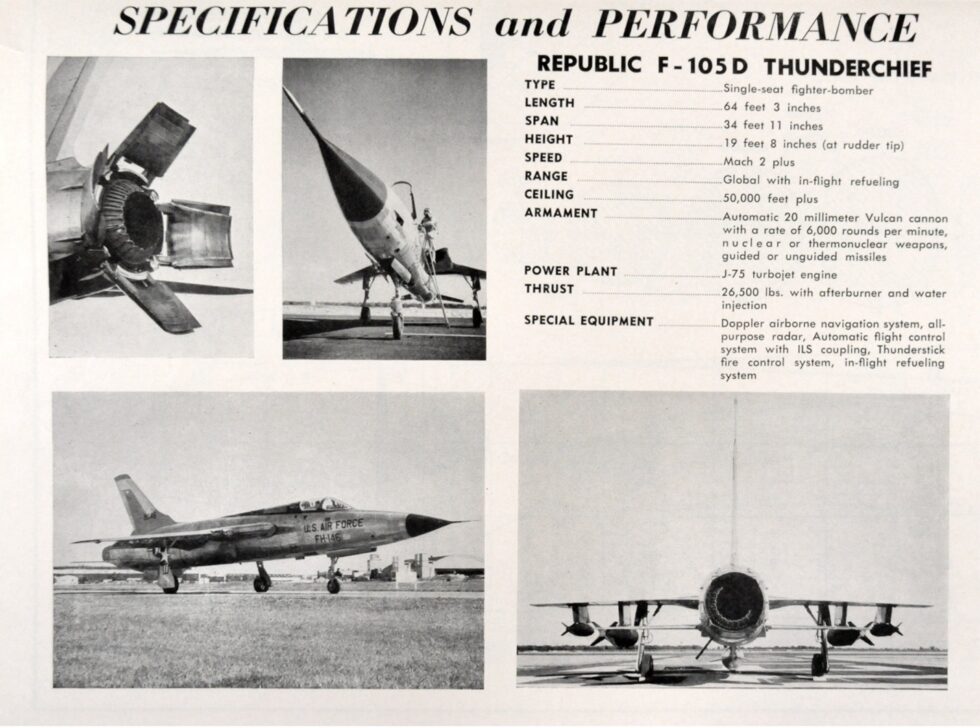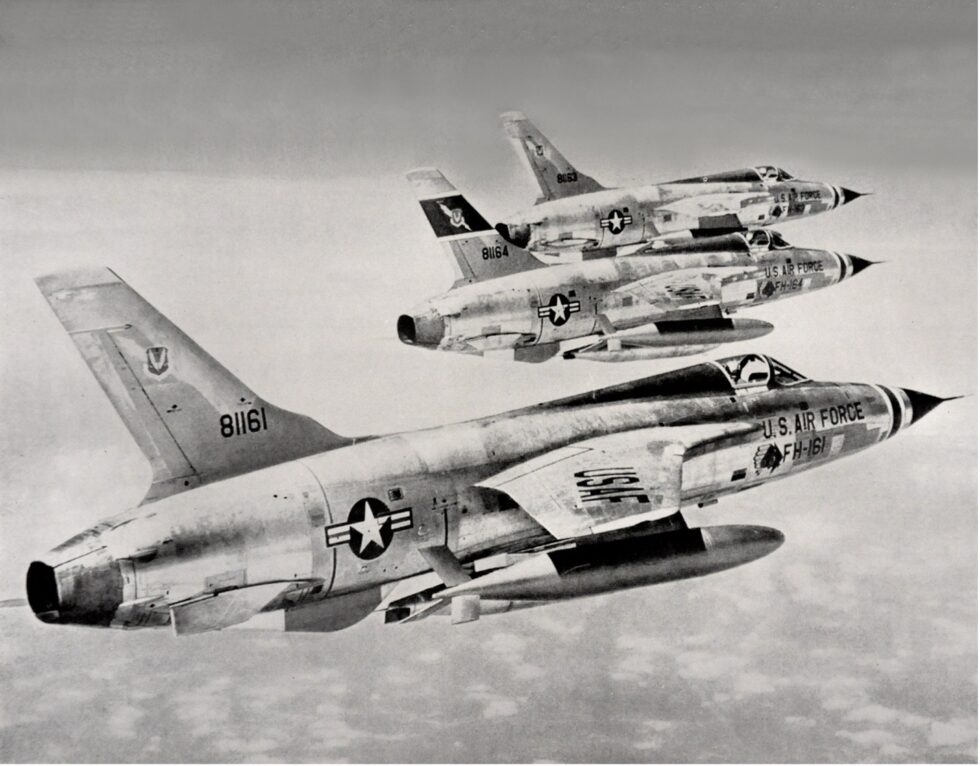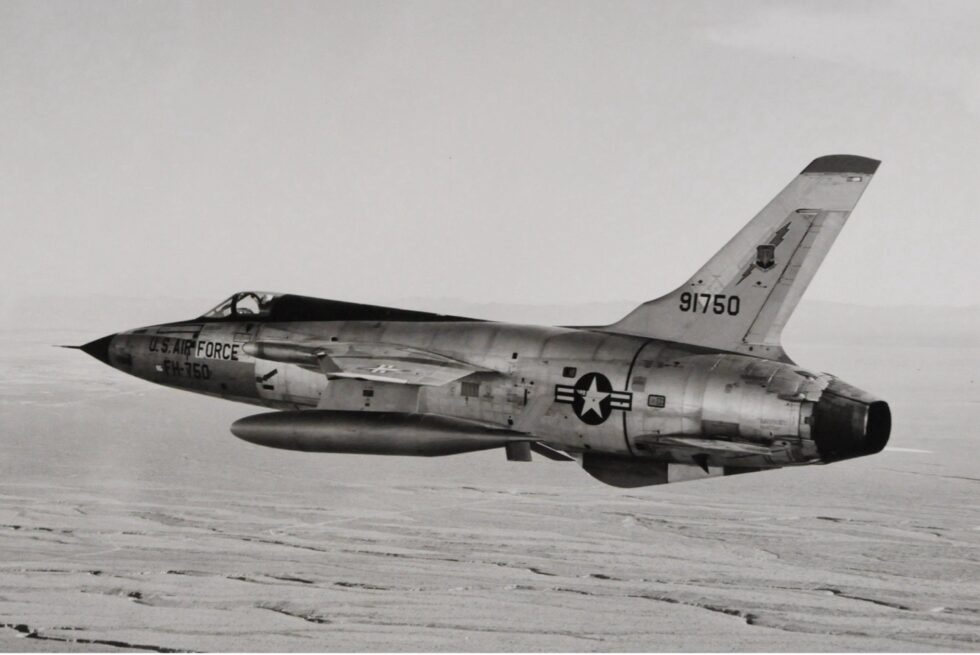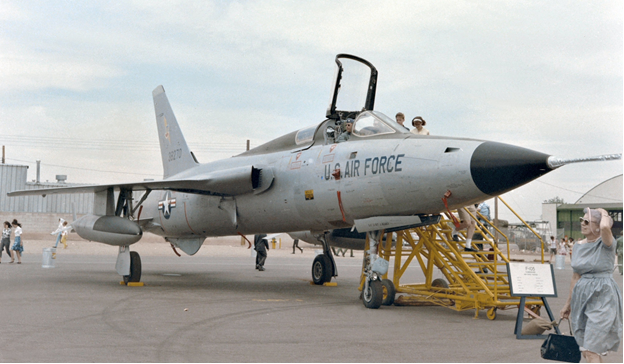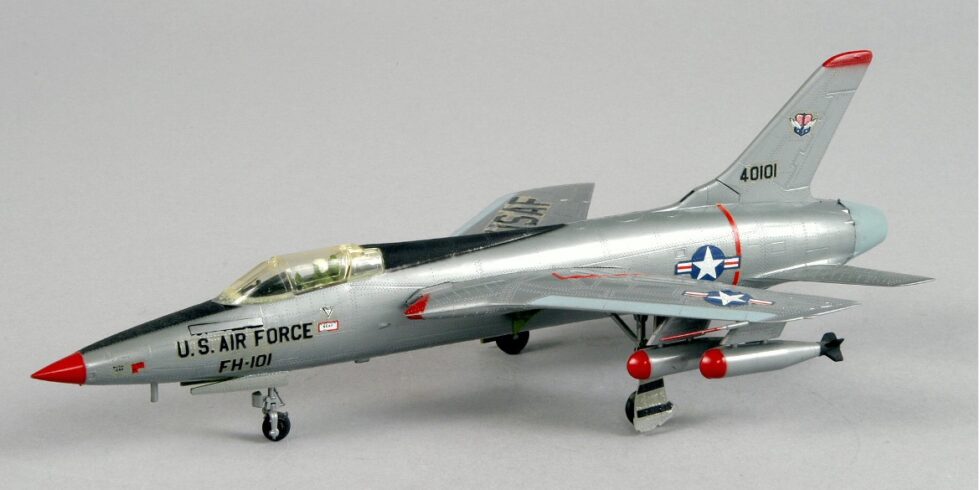USAF 4925 TG (A) Republic F-105D Thunderchief
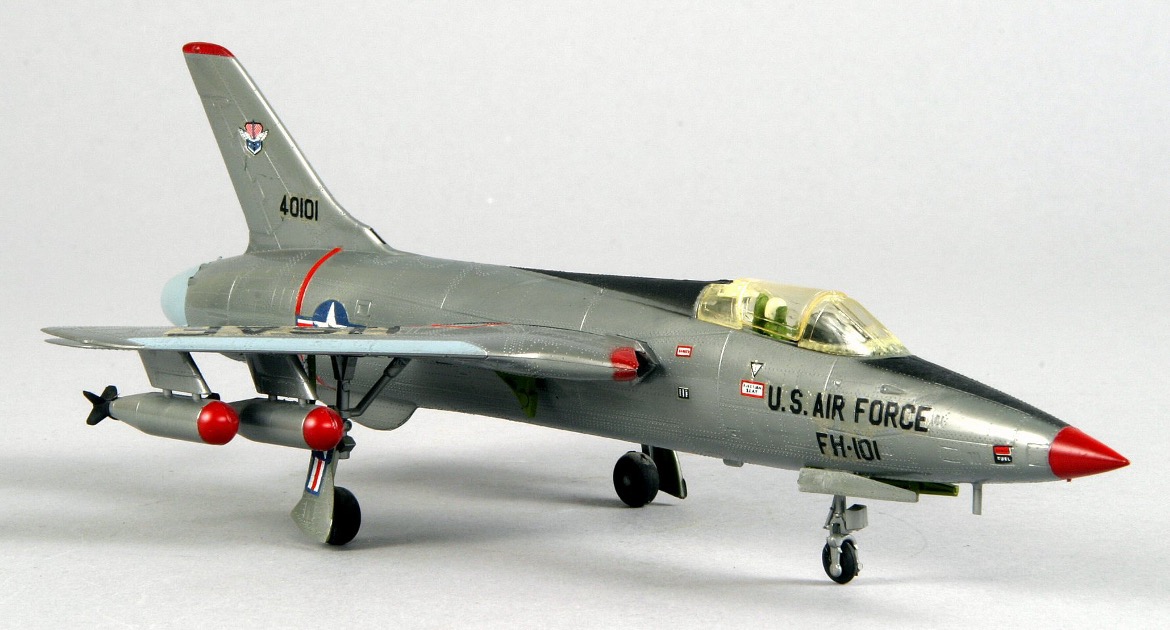
MODEL BY:
F. Hall
Model Scale:
1/72
MODEL ADDED:
N/A
historical significance
First Albuquerque Visit: 1965
Additional Information:
The Republic F-105 Thunderchief was a fighter-bomber that served with the United States Air Force (USAF) from 1958 to 1984. Capable of Mach 2, it conducted the majority of strike bombing missions during the early years of the Vietnam War. Originally designed as a single-seat, nuclear-attack aircraft the F-105 was commonly known as the “Thud” by its crews.
As follow-on to the Mach 1 capable North American F-100 Super Sabre, the F-105 was also armed with missiles and a rotary cannon although the design was tailored to high-speed low-altitude penetration carrying a single nuclear weapon internally. The Thunderchief was first flown in 1955 and entered service in 1958.
In March of 1956, the USAF placed a further order for 65 F-105Bs and 17 RF-105Bs. On May 26, 1956, the first pre-production YF-105B made its maiden flight. The first production F-105B was accepted by the USAF on May 27, 1957 and in June of 1957, Republic Aviation requested that the F-105 be named the Thunderchief and the USAF made this name official shortly after.
The Thunderchief was rapidly withdrawn from USAF service after the end of the Vietnam War. Of the 833 F-105s built, a combined 395 F-105s were lost in Southeast Asia, including 334 that were lost to enemy action and 61 lost in operational accidents. Following the Vietnam War the USAF began transferring the remaining aircraft to Air Force Reserve (AFRES) and Air National Guard (ANG) units.
The USAF Thunderbirds used the Republic F-105B Thunderchief in 1964 for only six shows before safety concerns resulted in the team’s adoption of the F-100D. The last flight of the F-105 Thunderchief was by the Air Force Reserve’s 466th Tactical Fighter Squadron with F-105Ds on February 25, 1984.
The 4925th Test Group was a United States Air Force unit that was last assigned to the 4901st Support Wing (Atomic), at Kirtland Air Force Base, in Albuquerque, New Mexico. Designated the 4925th Test Group (Atomic) on 1 July 1951, the unit was known as the “The Megaton Blasters”, and was responsible for the developmental flight testing of all USAF nuclear weapon delivery systems including conducting live test drops from 1951 through 1956. Following 1956 the 4925th focused on operational methods and equipment for delivering nuclear weapons. It was shut down on August 31, 1961 after it was inactivated by the Air Force Systems Command. The components of the 4925th’s mission were distributed among other units.
A Joint Task Force is a “joint” (multi-service) ad hoc military formation. The task force concept originated with the United States Navy in the 1920s and 1930s. In September of 1964, Major General George Brown was selected to organize and command JTF-2, a Joint Chiefs of Staff organization formed at Sandia Army Base in Albuquerque New Mexico, to test the services’ weapon systems. The Low Altitude Program nuclear test organization operated from 1965 to 1970 and was staffed by personnel from all three services.
A Republic F-105D, 40101, was assigned to the 4925th Test Group (A) at Kirtland Air Force Base and to the Joint Task Force 2 at Sandia Base in Albuquerque New Mexico for weapons suitability tests in 1965.
GALLERY:
SEARCH OUR DATABASE:

